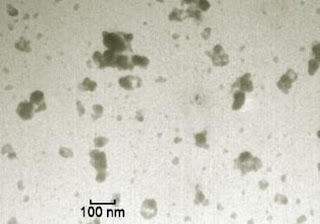MU Researchers Examine the Environmental Effects of Silver Nanoparticles
Hu will be working with Baolin Deng, an associate professor of civil and environmental engineering in the college, to study silver nanoparticles - specifically, their potential affects on wastewater treatment systems. They have received an $84,000 grant from the National Science Foundation. The study will begin in June and take about a year to complete. Hu and Deng will determine how silver nanoparticles interact with bacteria that are used for wastewater treatment.
"Nitrifying bacteria is extremely sensitive to metal toxins and could serve as a potential environmental health indicator," Hu said. "Over time, a small volume of nanoparticles will accumulate in our sewage plants."
The engineers want to find out if silver nanoparticles, known for their bacteria-fighting ability, effectively defend against bacteria found in treatment plants. Hu said the particles enter sewage systems following the washing of hands after people have handled the "nanotechnology enhanced" products.
Some of those products include:
- bandages
- clothing
- cosmetics
- car wax
- toys
Hu said laundry detergents, soaps, water filters and washing machines also employ nanotechnology and can directly dispense silver nanoparticles into the sewage system. - 30 -
Contact: Bryan Daniels Senior Information Specialist 573-882-9144 DanielsBC@missouri.edu On the Net: University of MissouriMU College of Engineering
Technorati Tags: nanofibers or Nanoscientists and Nano or Nanotechnology and nanoparticles or Nanotech and nanotubes or nanochemistry and nanoscale or Environmental Effects or Silver Nanoparticles and University of Missouri-Columbia or ecological systems and Nanotechnology Today or Public Domain Clip Art and Republican National Convention Blog














